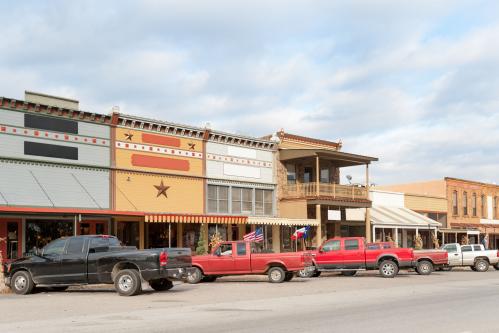The Reimagining Rural Policy podcast series, produced by Rural Matters with underwriting and editorial leadership from the Brookings Institution, is a three-part series highlighting the urgency to transform federal rural policy.
Through conversations with influential thinkers, practitioners, and policymakers, the series provides a road map for the Biden-Harris administration to reimagine federal policy so that it meets the diverse realities of today’s rural people and places: investing in their leadership and institutions, building on their assets and innovation, and providing their communities an on-ramp for sustained prosperity.
Episode 1: Reimagining Rural Policy, with Tony Pipa and Janet Topolsky
In this episode, Brookings Senior Fellow Tony Pipa and Janet Topolsky, executive director of the Aspen Institute’s Community Strategies Group, provide an overview of the federal rural-policy landscape and highlight key reforms policymakers must consider to do right by rural people and places.
 Pipa draws from the Brookings “Reimagining Rural Policy” report to describe the fragmentation and incoherence of the federal government’s approach to rural, laying out the key elements of a transformation—starting with a national strategy and long-term, flexible investments—that would better meet rural’s distinct challenges and opportunities. Topolsky pushes us to rethink what we mean by “development” when it comes to rural and highlights the innovation of rural development hubs and intermediaries in strengthening their regions, making the case for increasing return on investment by building the capacity of these organizations.
Pipa draws from the Brookings “Reimagining Rural Policy” report to describe the fragmentation and incoherence of the federal government’s approach to rural, laying out the key elements of a transformation—starting with a national strategy and long-term, flexible investments—that would better meet rural’s distinct challenges and opportunities. Topolsky pushes us to rethink what we mean by “development” when it comes to rural and highlights the innovation of rural development hubs and intermediaries in strengthening their regions, making the case for increasing return on investment by building the capacity of these organizations.
“[Lots of] programs do not necessarily equal policy.”
—Tony Pipa
Episode 2: Federal Policy to Meet the Diversity of Today’s Rural America and Tribal Nations, with Gbenga Ajilore, Kennedy O’Dell, and Erik Stegman
Part two convenes rural development experts to discuss how policy can be sensitive to the rich diversity of rural communities and Tribal nations. Gbenga Ajilore, senior advisor in the Office of the Under Secretary at USDA Rural Development, argues that misconceptions about rural America’s demographics lead to policies that neglect its racial and economic diversity, and explains how the U.S. Department of Agriculture is working to rectify past discrimination. Kennedy O’Dell, a senior research and policy associate at the Economic Innovation Group (EIG), explains that 21 percent of the rural population are people of color and over 50 percent of rural African Americans and 45 percent of rural Native Americans live in distressed counties, compared to 18 percent of rural whites. Erik Stegman, executive director of Native Americans in Philanthropy, discusses the centrality of cultural preservation to Native American development and prosperity and the unique opportunities and investments presented by the American Rescue Plan.
“When we have a better understanding of what rural America looks like, then the policy that we have will not leave those communities behind.”
—Gbenga Ajilore
Episode 3: Capacity Building as Key to Successful Rural Development, with Cheryal Hills and Rob Riley
In part three, two seasoned rural practitioners share how the federal government can jumpstart equitable rural prosperity by investing in capacity building. Cheryal Hills, executive director of Region Five Development Commission, outlines forms capacity building initiatives take, including investments in staff, training programs, technical assistance, peer learning, strategic development, network building, mentorship, and more. Rob Riley, president of the Northern Forest Center, notes the “triple bottom line” of community, economic, and environmental outcomes that projects should aim for and explains how regional collaboration and workforce development are essential to achieving them. Riley and Hills also provide tips for how the federal government can leverage the $3 billion appropriated for the Economic Development Administration’s Economic Adjustment Assistance Program through the American Rescue Plan, as well as the $5 billion Rural Partnership Program proposed in the American Jobs Plan, to help rural communities thrive.
“Whether we’re talking about organizations or communities, when we are building capacity we are talking about learning and applying and revising the systems or infrastructure to help us meet our goals.”
—Cheryal Hills






Commentary
Reimagining federal rural policy: A podcast series with Rural Matters
June 16, 2021